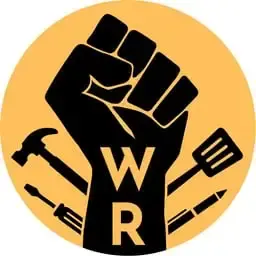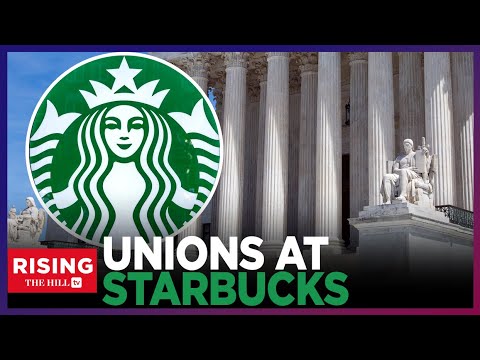Briahna Joy Gray and Robby Soave discuss Supreme Court hearing a case between Starbucks and the National Labor Relations Board.
Short Summary
- Starbucks fired seven baristas at a Tennessee store for allegedly violating company policy by inviting a TV news crew into the store after working hours.
- The employees believe their termination was due to their union organizing activities.
- The National Labor Relations Board (NLRB) agreed with the employees’ perspective on their firing.
- A judge approved the NLRB’s request to reinstate the workers.
- The case has escalated to the Supreme Court as Starbucks challenges the standard used by federal judges to decide if workers should be rehired after unionizing.
- A ruling against the NLRB could potentially weaken labor organizing efforts.
- The NLRB uses a 10j injunction to temporarily halt enforcement actions while issues are pending.
- Legal experts express concern that a Supreme Court ruling in favor of Starbucks could negatively impact labor actions.
- Employers often use pretexts to justify firing employees, highlighting the importance of mechanisms like the NLRB to hold them accountable for illegal retaliatory behavior.
- The attorney representing Starbucks in the case is Lisa Blatt, who is arguing her 50th case before the Supreme Court.
10(j) Injunction Activity at the National Labor Relations Board [A]
Section 10(j) of the National Labor Relations Act authorizes the National Labor Relations Board to seek temporary injunctions against employers and unions in federal district courts to stop unfair labor practices while the case is being litigated before administrative law judges and the Board. These temporary injunctions are needed to protect the process of collective bargaining and employee rights under the Act, and to ensure that Board decisions will be meaningful. The section was added as part of a set of reforms to the Act in 1947. Over the years, all NLRB General Counsels have made use of this effective enforcement tool, as shown in this chart [1].
There are 15 categories of labor disputes in which Section 10(j) injunctions may be appropriate, listed here [2]. Under NLRB processes, potential cases are identified by Regional Offices and reviewed by the General Counsel, who must seek authorization from the Board before proceeding to court. Below is a list of all 10(j) injunction cases authorized by the Board since September 1, 2010, with status updates.
Links:



Was going so well until she let Robby speak again!
That guy is consistently as full of shit and oversimplifying as a high school freshman who just discovered Ayn Rand and gets all his news from talk radio 🤦